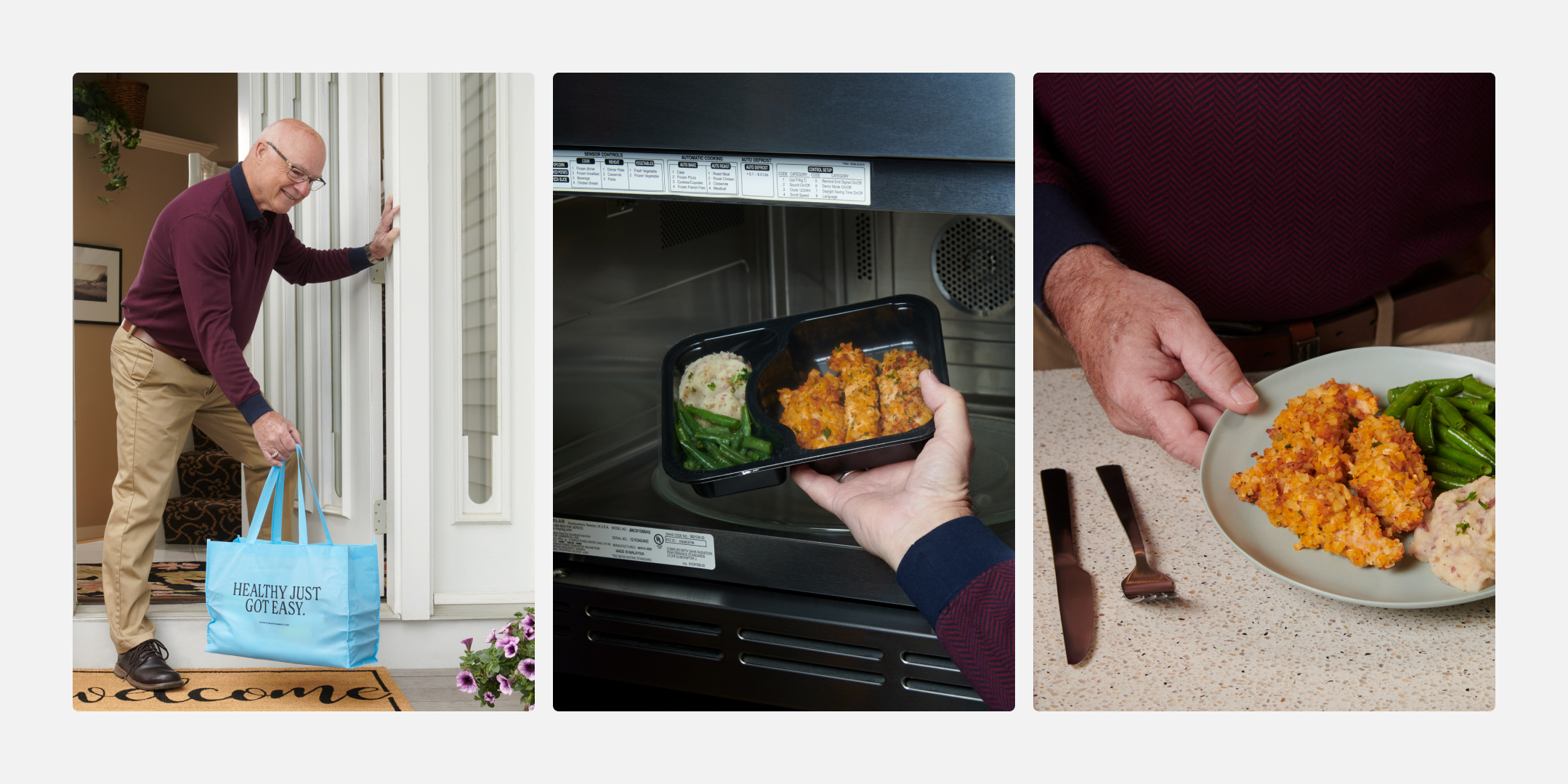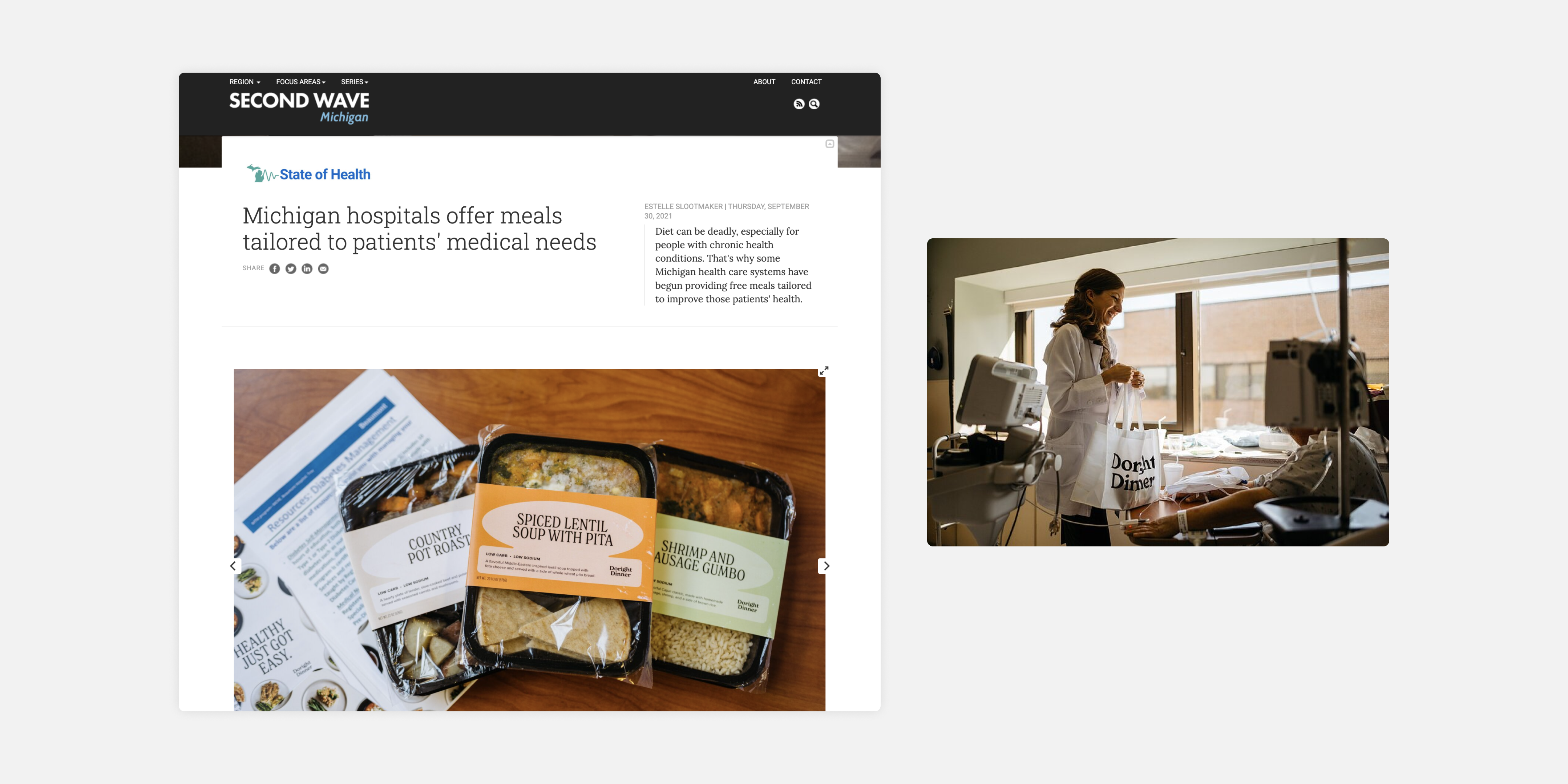Medically Tailored Meals
2020
Design Director: Kate Micheels
Project Lead: Stephanie Russell
Design Strategists: Marcus Djuhadi, Kali Lewis, Hannah Sellers
Business Analysts: Tyler Booth, Michael Zhang
Challenge
As the 65+ population grows and opts to age in place, providers are pursuing cost-effective ways to maintain seniors’ health at home. Relish Works was approached by Corewell Health to develop a service bettering the dietary health of seniors in their communities, leveraging strategic partnerships and Gordon Food Service’s capabilities.
As the 65+ population grows and opts to age in place, providers are pursuing cost-effective ways to maintain seniors’ health at home. Relish Works was approached by Corewell Health to develop a service bettering the dietary health of seniors in their communities, leveraging strategic partnerships and Gordon Food Service’s capabilities.
Outcome
We created a meal program for seniors living with chronic illness that offers balanced, nutritional, and tasty meals tailored to patients’ medical needs. Our pilot proposal received $500K in grant funding from the Michigan Health Endowment Fund. My contributions included in-home research, service and experience design, and brand development.
We created a meal program for seniors living with chronic illness that offers balanced, nutritional, and tasty meals tailored to patients’ medical needs. Our pilot proposal received $500K in grant funding from the Michigan Health Endowment Fund. My contributions included in-home research, service and experience design, and brand development.
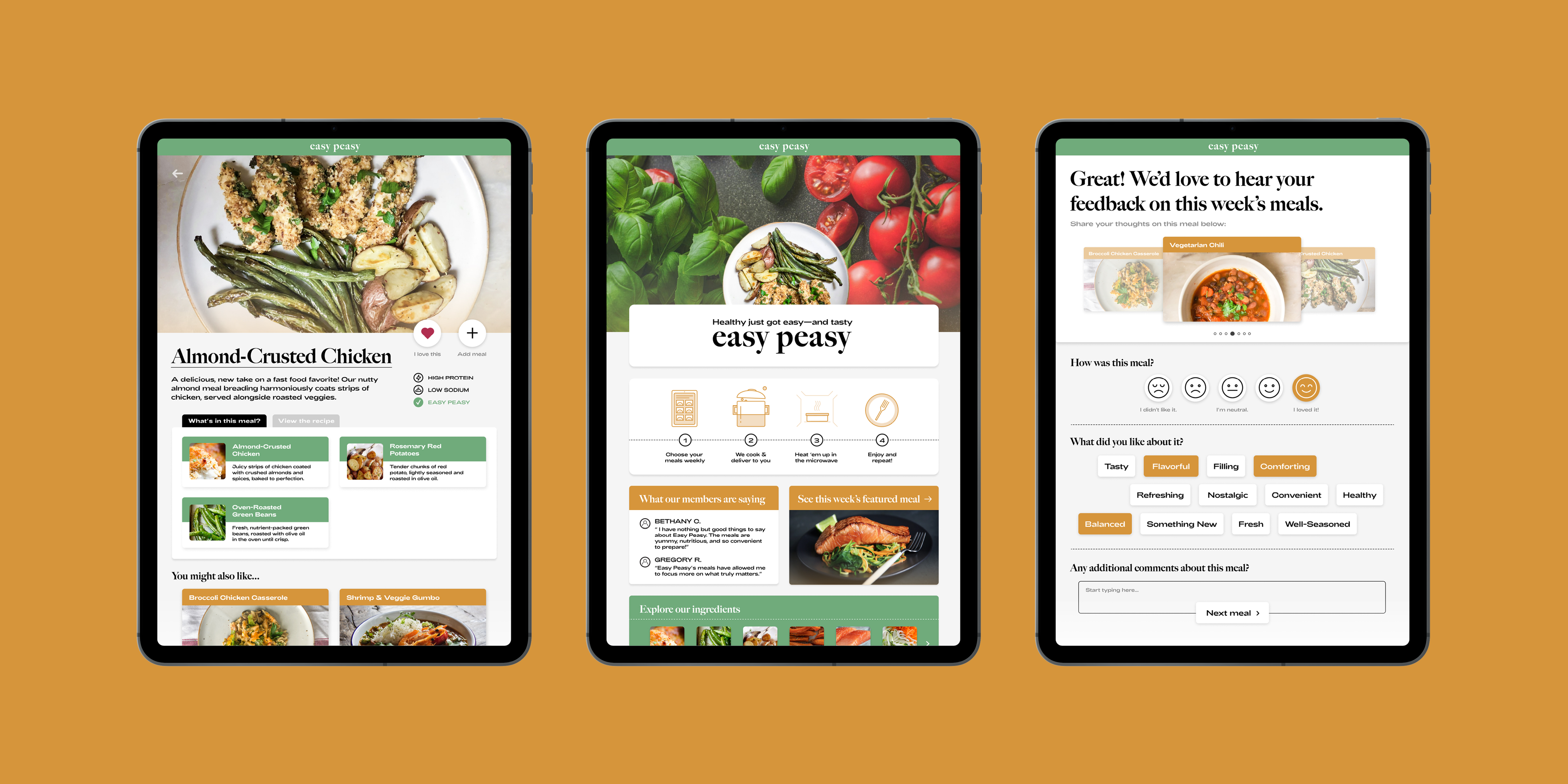
Nutrition can be a struggle for seniors.
Eating balanced meals is consistently difficult, and maintaining an appropriate diet for a chronic condition is even more challenging. Seniors often rely on convenient, familiar, and affordable options when eating. However, these can be high in sodium and low in nutrients.
Organizations are pursuing medically-tailored services as food’s impact on our health gains traction with consumers and healthcare. While nutrition is critical to health at any point, it is most relevant in disease prevention and management. Diet changes can work in tandem with medicine and other holistic practices.
Organizations are pursuing medically-tailored services as food’s impact on our health gains traction with consumers and healthcare. While nutrition is critical to health at any point, it is most relevant in disease prevention and management. Diet changes can work in tandem with medicine and other holistic practices.

One effort in this space has been medically-tailored meals.
Medically-tailored meals are kits customized around specific disease states. Hospitals have offered these meals to patients after incidents requiring intense recovery. A growing body of evidence suggests this approach can positively impact symptoms, disease progression, and healthcare utilization.
While nonprofits have traditionally led this space, there is momentum within the healthcare and commercial industries.
While nonprofits have traditionally led this space, there is momentum within the healthcare and commercial industries.
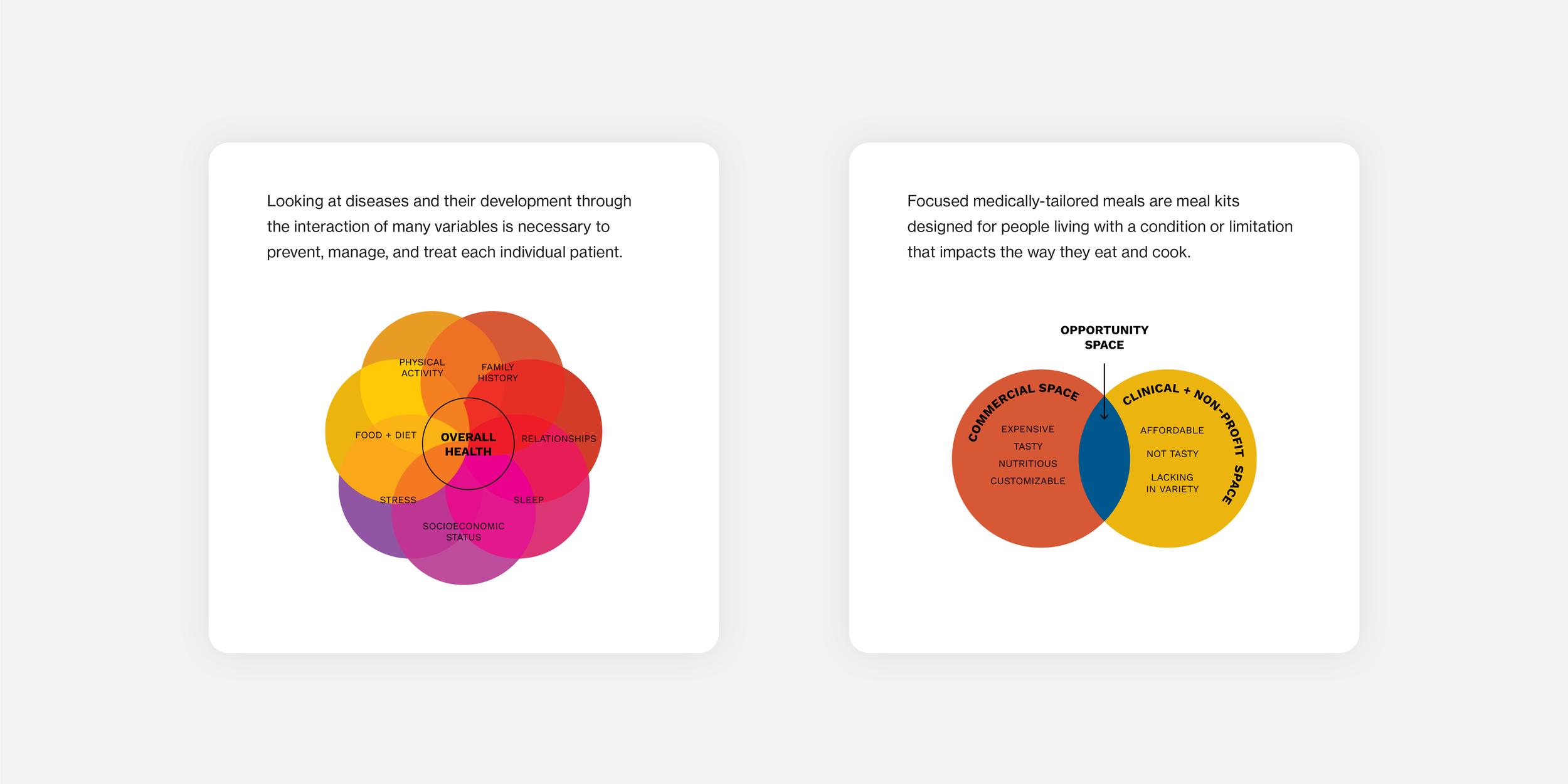
I entered this project at its midpoint.
The team had already talked with patients and registered dietitians to discover what dietary issues arise in seniors’ lives. Foundational research gave color to daily challenges with healthy eating.
Guided by insights synthesized from this first round of research, I helped translate the learnings into clear principles to inform the program design.
Guided by insights synthesized from this first round of research, I helped translate the learnings into clear principles to inform the program design.

To articulate goals for the program across touchpoints, we defined experience principles.
The experience should be guided, educational, and exciting.
Seniors should learn why the foods in the meal plans are there, the basics of clean eating, and how to maintain a healthy diet long-term. In the same vein, the program should not focus on insecurities.
The program should be flexible, customizable, and convenient.
The service should be tailored to medical needs, taste preferences, and cultural backgrounds. It should facilitate change by gradually building better habits. The meals must be readily available and easy to prepare.
The senior should feel empowered, informed, and supported.
From start-to-finish, seniors should feel valued and motivated to improve their diet. They must know what this program can help with and what else they can focus on to stay healthy.
Seniors should learn why the foods in the meal plans are there, the basics of clean eating, and how to maintain a healthy diet long-term. In the same vein, the program should not focus on insecurities.
The program should be flexible, customizable, and convenient.
The service should be tailored to medical needs, taste preferences, and cultural backgrounds. It should facilitate change by gradually building better habits. The meals must be readily available and easy to prepare.
The senior should feel empowered, informed, and supported.
From start-to-finish, seniors should feel valued and motivated to improve their diet. They must know what this program can help with and what else they can focus on to stay healthy.
We designed and visualized the program at a high-level. Then, we took it into seniors’ homes for feedback.
Although we had a pulse on the program’s general structure, we needed clarity around patient-facing details. We formed a plan to inquire how to best meet seniors’ needs. For this phase of research, we set four goals:
I worked on a discussion guide and stimuli for in-home interviews. In our conversations, participants shared about their relationship with food and chronic illness, plus first impressions and expectations for our program.
- Learn what aspects of the experience seniors value the most.
- Understand how the program would fit into the senior’s day-to-day.
- Identify challenges that seniors may have with this program.
- Prioritize features the seniors find most and least useful.
I worked on a discussion guide and stimuli for in-home interviews. In our conversations, participants shared about their relationship with food and chronic illness, plus first impressions and expectations for our program.

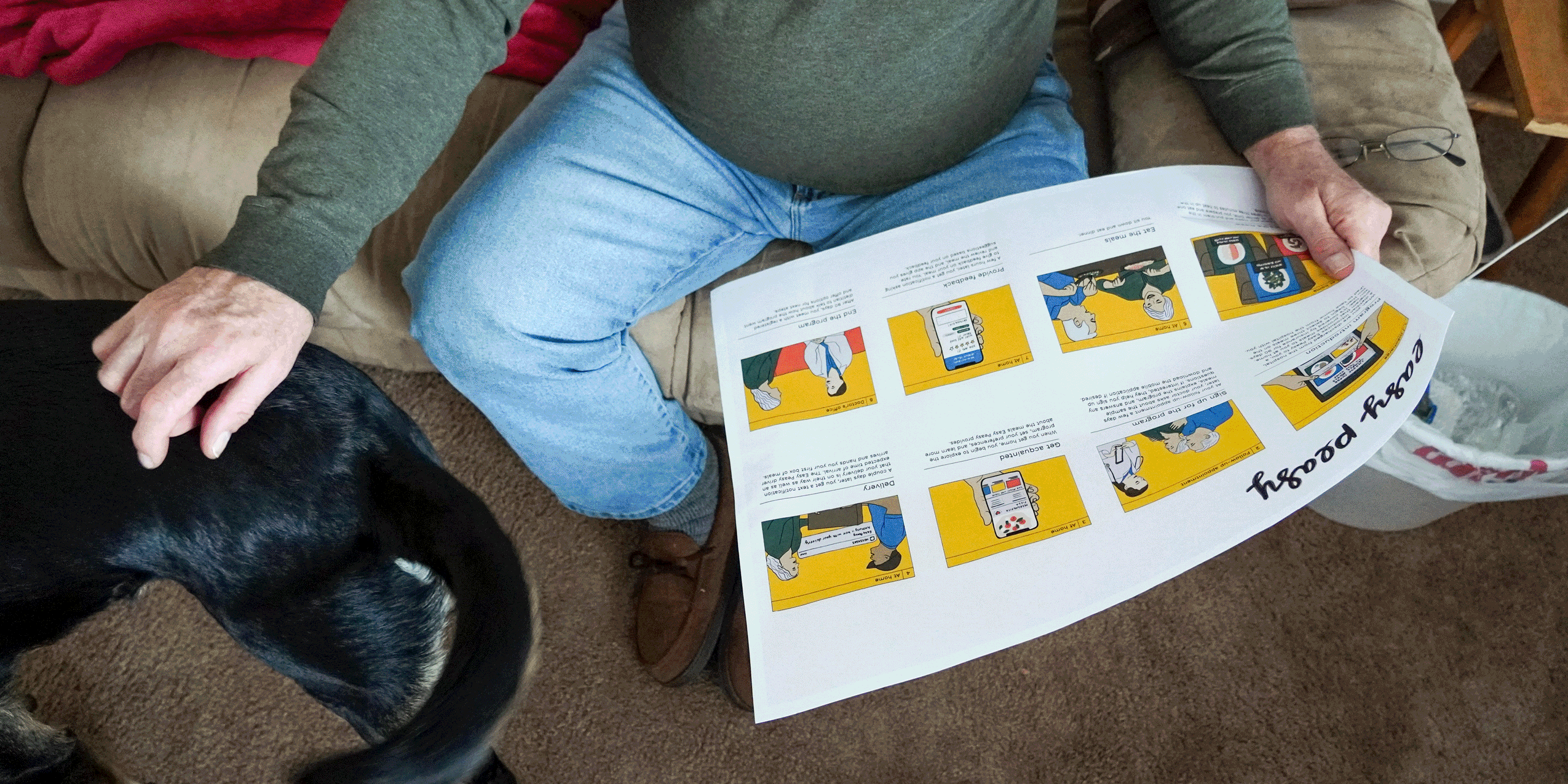
Communication artifacts were critical to capturing and sharing our progress with partnering teams.
Grounded by our field learnings, we continued to refine and iterate the experience. At this phase, I led the design of journey maps, service blueprints, and framework diagrams to facilitate productive conversations between my team and stakeholders. I built each artifact with its specific audience’s needs and priorities in mind, adjusting the fidelity and level of detail accordingly.


As we sifted through the logistics, we explored how to bring this experience to life.
We established a strategic territory rooted in ease through practice, preparation, and price to minimize roadblocks in adoption. When it comes to daily meals, seniors need an easy solution. Easy Peasy invites them to take a simple step towards better health.
I gathered imagery and led ideation around brand values, messaging, and visual language. Following our brainstorm, I created explorations that inspired three directions. We presented each to seniors and stakeholders. The feedback helped establish a decisive approach for the pilot branding.
I gathered imagery and led ideation around brand values, messaging, and visual language. Following our brainstorm, I created explorations that inspired three directions. We presented each to seniors and stakeholders. The feedback helped establish a decisive approach for the pilot branding.



Lastly, I prototyped a digital ordering and review experience that supports holistic health.
For our executive proposal, I designed a prototype used to convey Easy Peasy’s digital touchpoints. This digital artifact was instrumental in communicating the service’s potential and helped secure buy-in for a pilot.
The technology is designed for patients who increasingly use virtual tools to engage with loved ones. Patients interact with the program through an experience optimized for tablet viewing, a popular device for seniors. They are encouraged through known engagement principles such as image-first selection, limited options, and single-tap interactions.
The technology is designed for patients who increasingly use virtual tools to engage with loved ones. Patients interact with the program through an experience optimized for tablet viewing, a popular device for seniors. They are encouraged through known engagement principles such as image-first selection, limited options, and single-tap interactions.

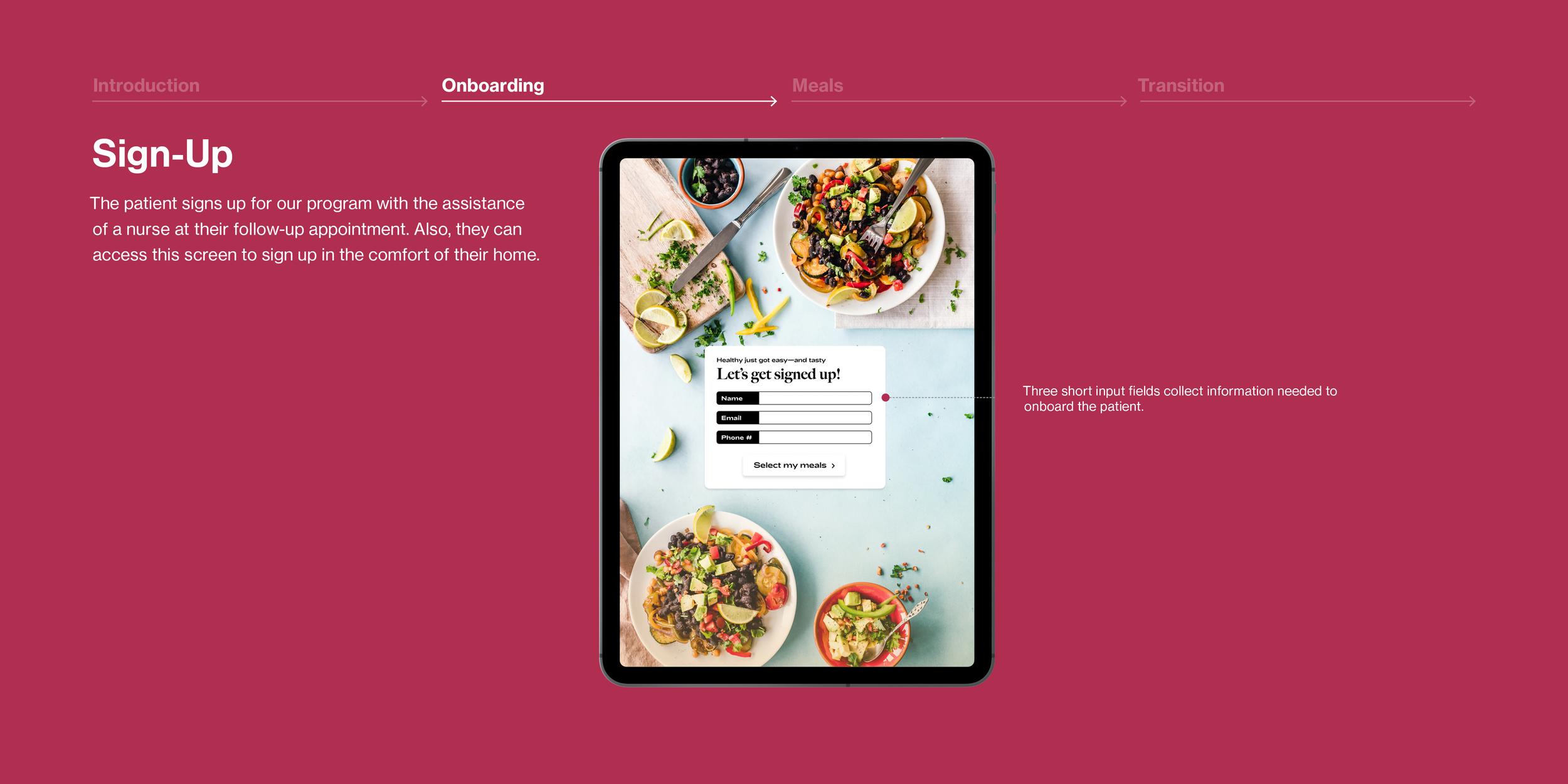

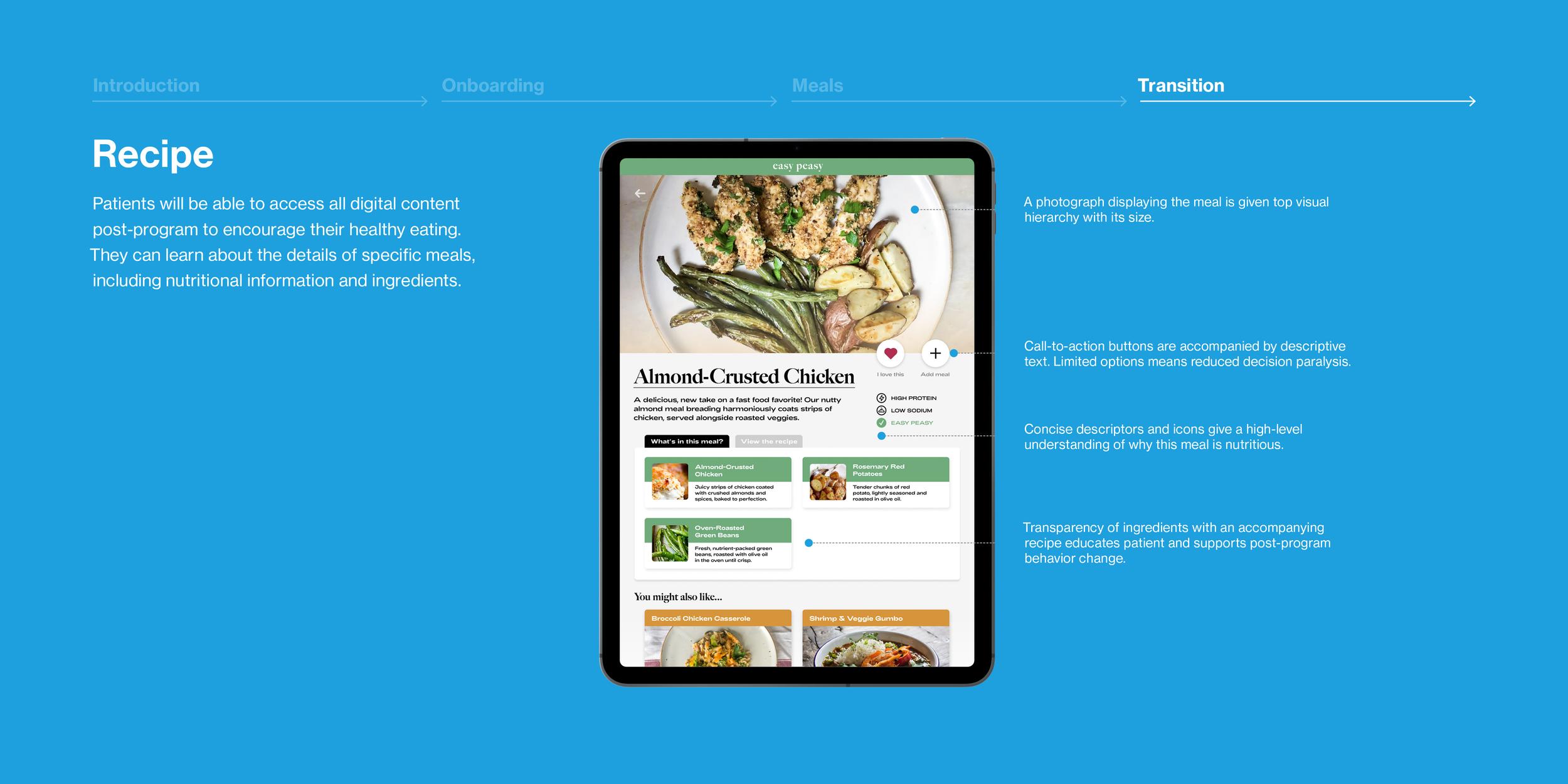
Impact
Following my contributions to bring this program to life, I then moved onto a different project upon completion of the pilot proposal. Our work went on to receive $500K in grant funding from the Michigan Health Endowment Fund.
The following year, Relish Works brought me back on as a freelancer to support a full rebrand of the venture. I provided design support and art direction in preparation of the program’s clinical pilot—rebranded from Easy Peasy to Doright Dinner.
The pilot was a major success, yielding an overall decrease in participant BMI, a double-digit decrease in hospital readmission rates, and significant cost savings for our healthcare network partners. To this day, Doright Dinner has delivered over 30,000 meals to senior patients across five hospital systems.
The following year, Relish Works brought me back on as a freelancer to support a full rebrand of the venture. I provided design support and art direction in preparation of the program’s clinical pilot—rebranded from Easy Peasy to Doright Dinner.
The pilot was a major success, yielding an overall decrease in participant BMI, a double-digit decrease in hospital readmission rates, and significant cost savings for our healthcare network partners. To this day, Doright Dinner has delivered over 30,000 meals to senior patients across five hospital systems.
